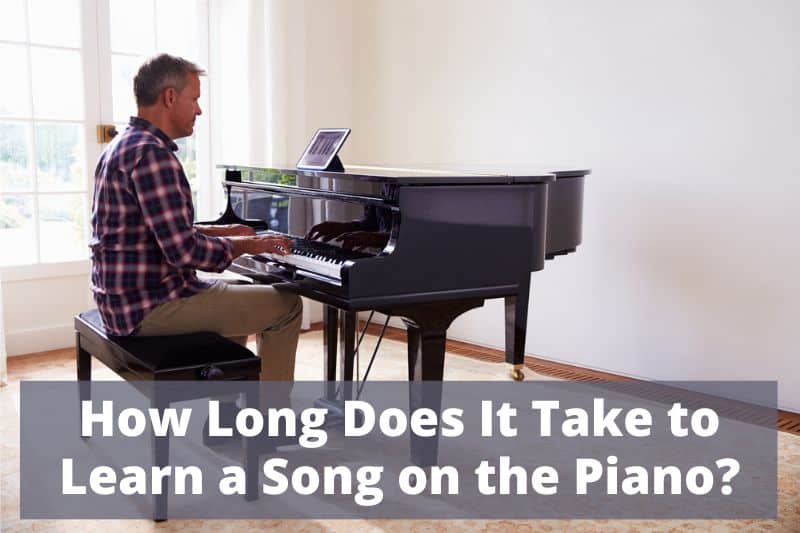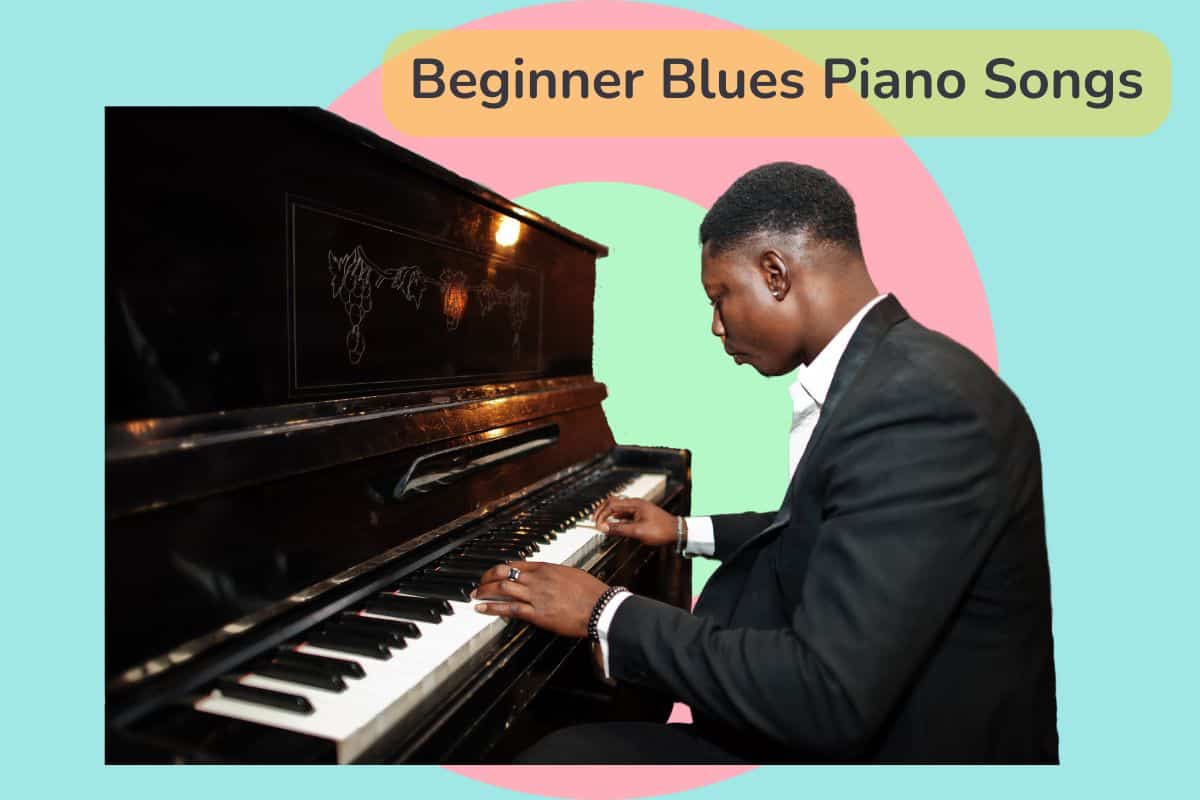When people think of the piano, they may think of incredible classical music for studying, hymns sung in a congregation, or even power ballads from the ’80s. The piano is so versatile that it can create an atmosphere for nearly all music genres, and the sound it produces has evoked various emotions in people for centuries. But how long does it take to learn a song on the piano?
How long it takes to learn a song on the piano depends on the complexity of the music. You can learn a song consisting of 3-5 chords and simple melodies in a few hours of practice. If you’re tackling a classical piece, it may take a longer commitment depending on your skill level.

Time, investment, skill, and determination contribute to learning how to play a song on the piano. As you dive into understanding the instrument, consider the following information when approaching a new piece.
Approaches to Learning Songs on the Piano
The internet and local music stores are excellent resources for learning independently. While professional music teachers can offer correction and advice during practice, self-taught resources will allow you to progress as quickly as possible through the material. If you’re learning a classical piece, you may need to be able to read sheet music. If you’re learning a modern song, you likely will need to understand chord structure.
Reading Sheet Music
Sheet music is full of complexities and nuances that skilled musicians learn and utilize to play a song. If you don’t already know how to read music, it will take some time and practice to learn. You can utilize online resources such as Music Theory Academy, which provides reading sheet music and music theory lessons. To have tangible material, you can also order a book like the Piano Book for Adult Beginners by Damon Ferrante.
Learning by Ear
Learning music by ear with any instrument requires a familiarity with the tool itself. Pianos, guitars, violins, etc., all have a wide range of notes and tones. Learning by ear requires you to train your ears to hear and recognize the instrument’s notes and melodies and replicate them.
This learning method may be more straightforward for simpler songs and tunes. However, it can still be reasonably complex if there are additional instruments to filter through as you listen.
Learn a Piano Piece by Watching
If you’re a visual learner, watching another person play the piece and mimic their hands may be very beneficial. This approach can be advantageous to a beginner pianist looking for proper hand placement who wants to study the hand movements of skilled piano players.
YouTube is full of incredible resources for online learning. Channels like Pianote are devoted to breaking down complex songs and difficult pieces into palatable sections for understanding:
While learning via YouTube or other platforms may not give you an interactive experience, watching and recognizing patterns and seeing another person’s movements and hand placements throughout the song can be beneficial. You can pause the videos and mimic their movements as you learn different sections and spend as much time as you need to feel comfortable with the music.
Apps for Learning
In this day and age, we not only have access to endless online resources, but we also have powerful apps that serve as interactive tools for learning. Flowkey is an excellent app that combines the above learning methods in one place. The app has several features, including:
- Piano lessons and videos for education
- The ability to listen to you play and give feedback
- A slow-motion setting to reduce the speed of songs as you play
- Videos of professional pianists playing so you can follow along
This app has songs from all skill levels from complete beginners to advanced levels and provides an interactive experience that other platforms cannot accommodate. Suppose you’re just beginning playing the piano. In that case, Flowkey is highly recommended for the most immersive experience you can get short of actually having a piano teacher in your home.
How To Learn a Song on the Piano Quickly
Whether you read music, follow a video of someone else playing, or listen by ear, you can learn a piano piece fairly quickly by breaking it down into smaller sections. Start with simple songs and spend time teaching yourself one hand at a time in each section and then build up speed as you learn.
Songs, by nature, typically have repetitive sections throughout them. In modern music, these categorized sections are the intro, verses, choruses, and bridges. You can break down each of those sections into smaller parts.
Once you’ve split the song into sections, practice each part with one hand at a time. Typically the right hand will play more of the melody while the left hand may play more chords or sustaining notes throughout the music. Flowkey advises learning the right hand and practicing that section for five minutes. Then learn the same section with your left hand for five minutes, and then practice them at the same time for five minutes.
You can begin stringing the sections together as you progress through the song. Once you’ve learned the first section with both hands, move on to the second. Then practice playing the two sections together to start building the piece. As you learn the third and subsequent sections, spend time stringing multiple parts together to establish the song’s flow.
You may start slow, and that is entirely okay. As you practice your sections and familiarize yourself with the piece, you can begin to pick up speed as you go along. Slowing it down and taking it in strides will help digest and memorize the notes.
How To Memorize a Song on the Piano
Memorizing a piano piece will naturally coincide with your learning. Whatever your level of piano playing, take the time to split the song into sections and practice each separately, you build up your muscle memory for the piece of music. Furthermore, learning those sections utilizes your visual and auditory senses to help commit the piece to memory.
With rigorous and consistent practice sessions, you’ll immediately recognize a wrong note and can call on your senses to help guide your hands to what you’ve learned.
Continue practicing in sections and test yourself by playing through those sections without using any sheet music or visual aids. Practice section one by itself, section two by itself, and then put them together. Continue this method for each section of the song to build your memory.
If you can practice the sections multiple times without referencing any material, you likely have a good handle on the piece and have a building block for memorizing the rest.
While you’re practicing, consider changing the tempo as you’re working on memorization. Play the sections at a reduced speed to help commit each note and movement to memory. As you familiarize yourself with the music and get more comfortable with the structure, you can start speeding up to the actual tempo.
Final Thoughts
There are many different approaches to learning songs on the piano. Whether you learn by watching someone on YouTube, listening to the piece itself, reading sheet music, or with a piano instructor, there is no wrong approach. Powerful applications like Flowkey combine all of those resources in one app to give you a well-rounded learning experience.
As you begin learning songs and applying some dedicated practice, you’ll inherently memorize the pieces as you break them down into sections. Memorization will come with practice, visual cues, audible memory, and muscle memory.



